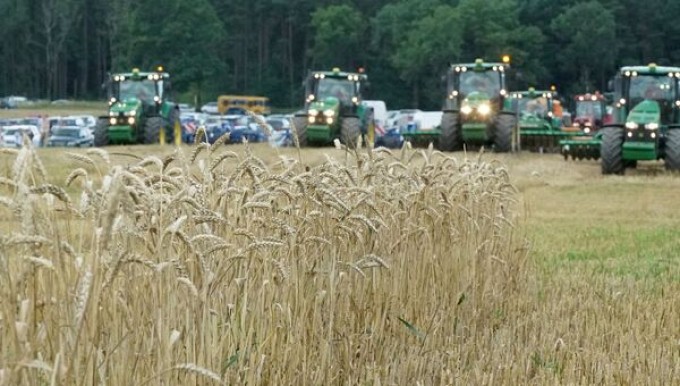
Kazhydromet has published the final forecast for the yield of spring wheat in the grain-growing zone of Kazakhstan for 2025. Given the current and expected agrometeorological situation, the yield of spring wheat in the north of the country is expected to be mainly around the average long-term values.
According to Kazhydromet calculations, in the Akmola region, the yield of spring wheat is forecast to be mainly at the level of 11.2-13.2 c/ha - these are the average long-term values for the region. At the same time, above-normal yields are expected in the Burabay (15.3-17.3 c/ha), Zerenda (16.4-18.4 c/ha) and Sandyktau (16.2-18.2 c/ha) districts.
In the Kostanay region, the average yield of spring wheat is expected to be at the level of 10.9-12.9 c/ha. Above average yields are expected in Karasu (13.9-15.9 c/ha), Sarykol (15.8-17.8 c/ha) and Uzynkol (16.2-18.2 c/ha) districts.
In the North Kazakhstan region, the average yield is expected to be slightly higher - 15.7-17.7 c/ha, which is the average long-term value for the region. Farmers in Yesil (17.8-19.8 c/ha), Zhambyl (18.2-20.2 c/ha), Kyzylzhar (19.1-21.1 c/ha) districts, in Timiryazevsky district and in the Shal Akyn district (15.2-17.2 c/ha) can harvest above the norm of wheat. In the East Kazakhstan region, the yield of spring wheat is expected to be higher than the average long-term values in the Glubokovsky district (21.1-23.1 c/ha), Katon-Karagaysky (19.6-21.6 c/ha) districts and in the Altai region (21.2-23.2 c/ha). In other districts, it is close to the average long-term values (17.8-19.8 c/ha).
In Pavlodar, the average yield is expected to be at the level of 8.8-10.8 c/ha, in Karaganda - 9.1-11.1 c/ha, in Aktobe - 8.3-10.3 c/ha, in Abay - 11-13 c/ha.
In the West Kazakhstan region, high yields of spring wheat are predicted in the Syrym (8.1-10.1 c/ha) and Chingirlau (12.8-14.8 c/ha) districts. In other districts - around the norm: 8.7-10.7 c/ha.
According to Kazhydromet, in the first ten days of August, in most districts of the northern half of Kazakhstan, agrometeorological conditions were satisfactory for grain filling and ripening. The average air temperature for the ten-day period was 1-4℃ below normal, with the exception of the west of the country and the northwest of the Kostanay region, where the average temperature was 1-3℃ higher, and precipitation was less than normal. Such meteorological conditions contributed to the start of harvesting. In the rest of the northern half of the country, precipitation was around and above normal.